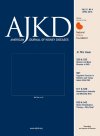The Role of the Kidney in Disorders of Volume: Core Curriculum 2016
The human body uses exquisitely sensitive resistors to assess organ perfusion, yet caregivers can only infer this information on the physical examination from crude measurements of skin turgor, capillary refill in nail beds, orthostatic blood pressures, and weight. Despite efforts to measure these markers, only a postural pulse increment > 30 beats/min has both sensitivity and specificity greater than 95% in the diagnosis of volume depletion. Our primitive measures are matched with vague language regarding “volume status.” Patients with excess volume are often described as “tanked,” “positive,” or “ahead,” whereas those who are volume depleted may be described as “down,” “negative,” or the even more inexact “dry” or “dehydrated.” Because a specific description of the volume disorder will help guide therapy, it is best to start with consideration of how extracellular volume affects vital organ perfusion.



